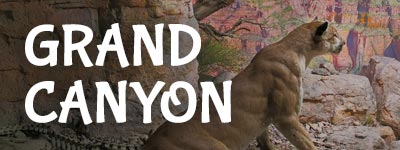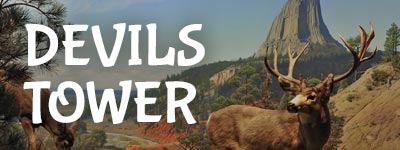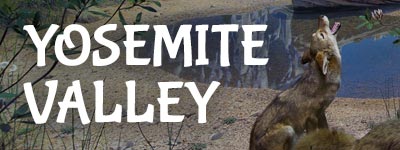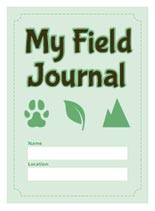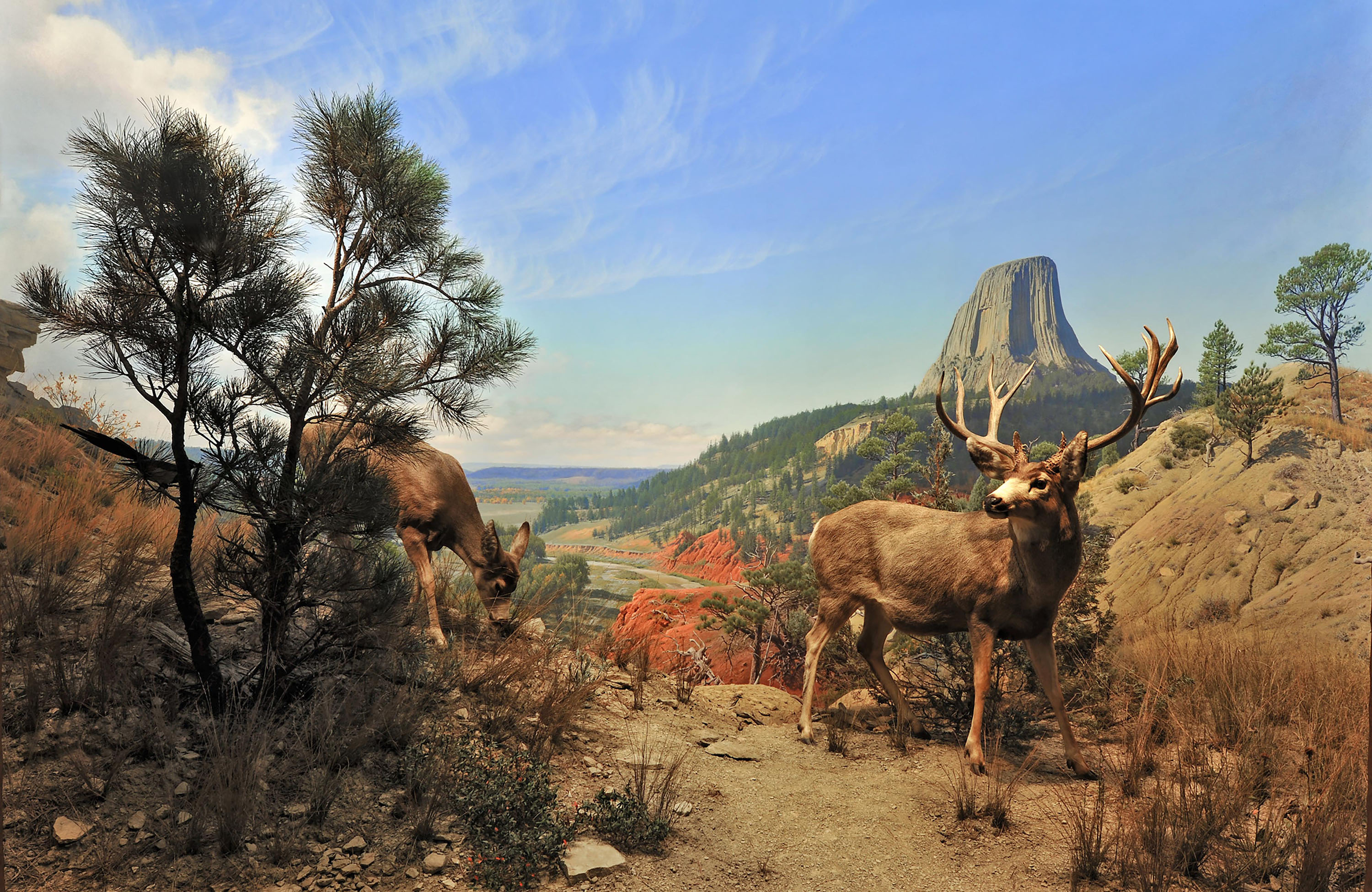
WELCOME TODEVILS TOWERWYOMING
This clear autumn day is perfect for exploring.
The rocky tower in the distance has inspired awe for generations—from Native Americans to President Theodore Roosevelt himself. In 1906, he declared Devils Tower a national monument. Let’s go and explore!
|
||
This is your online field journal.
It has 10 questions to help you observe the animals, plants, and environment in this scene.
ANIMALS
What kinds of animals do you see?
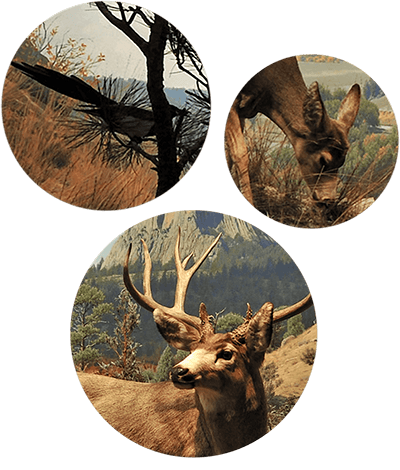
ANIMALS
What do you think the mule deer are doing? (You can pick more than one.)
ANIMALS
Are the deer carnivores, herbivores, or omnivores?
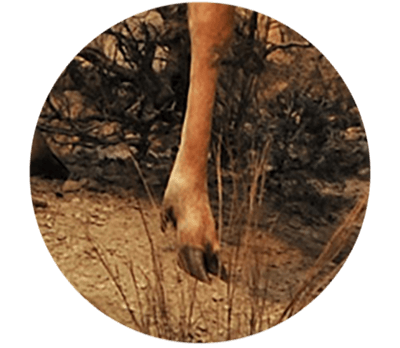
ANIMALS
Do you think they live here? Or are they just passing through?
PLANTS
What kinds of plants do you see? (Click all that you see.)
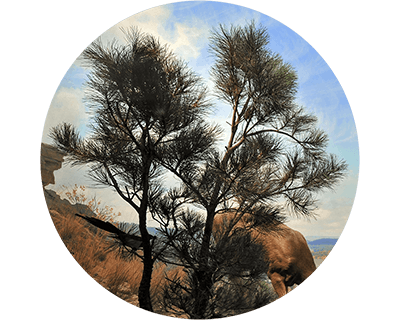
PLANTS
How might the ponderosa pine be adapted to the environment? (You can pick more than one.)
PLANTS
How might other organisms depend on the ponderosa pine?
ENVIRONMENT
Look at the colors in this scene. What are some of the main colors do you see? (Click all that you see.)
ENVIRONMENT
What kinds of geographic features do you see? (You can pick more than one.)
ENVIRONMENT
What clues do you see that might tell you how Devils Tower formed? (Hint: There are two.)
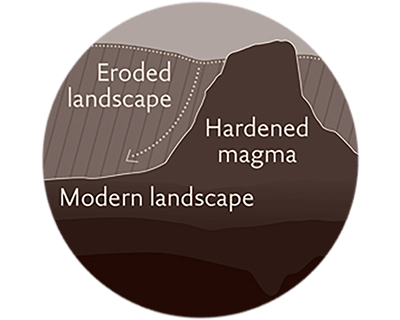

TIP: Close this book to help you see the whole scene better.
1 of 10
- amphibians
- birds
- fish
- insects
- lizards or snakes
- mammals
The mammals are easy to spot. These mule deer are named for their large, mule-like ears. Did you spot the bird in the tree? This insect-eating bird is called a black-billed magpie. These birds will land on mule deer and pluck ticks from their heads and backs.
2 of 10
- resting
- keeping watch
- hunting animals
- looking for food
- playing
The female (without antlers) is looking for food. She could be eating the grass, or searching for nuts, berries, leaves, or other small plants. The male (with antlers) is keeping watch. Deer are very cautious animals, and are always on the lookout for predators.
3 of 10
- carnivores
- herbivores
- omnivores
One clue is that a deer seems to be eating grass. But an even bigger clue is its feet. It has hooves, like horses, cows, and sheep, which means it’s a herbivore, a plant-eater. And if you could see inside their mouths, you’d find flat teeth—a sure sign of plant eating!
4 of 10
- live here
- just passing through
They are just passing through. Deer usually stop and stay in places where they can’t be easily seen. At night, they prefer to stay hidden in tall grasses, brush, and dense foliage.
5 of 10
- ferns
- grasses
- trees
- vines
Tall grasses and pine forests grow around Devils Tower. The tree on the left is a ponderosa pine.
6 of 10
- It thrives in dry areas.
- It needs moist soil to spread its roots.
- It can withstand cold winters and hot summers.
- Its roots can grow in rock cracks.
Ponderosa pines can survive the site’s hot summers and cold winters, and thrive in the dry environment. This evergreen tree can even grow on rocks by channeling its roots into the cracks.
7 of 10
- Its needles provide food.
- Its flowers provide nectar.
- Its branches provide protection.
Deer eat the pine’s evergreen needles in the winter, while birds rely on the tree for protection and a place to build nests. Like other pine trees, the ponderosa pine does not produce flowers.
8 of 10
- browns
- greens
- purples
- reds
You see lots of brown rocks, some green trees, and patches of red sandstone. Iron gives this soft rock its reddish color. These are also the oldest rocks at Devils Tower. They formed when the first dinosaurs roamed, around 200 million years ago.
9 of 10
- river
- lake
- butte
- valley
If you look closely, you can see a river flowing through the rocky valley. The Devils Tower rock formation is a butte, a narrow hill with steep sides and a flat top. It rises over the valley’s soft, broken red sandstone. It is found in legends of some Northern Plains tribes.
10 of 10
- vertical ridges in the rock
- scrubby trees
- long fault lines
- soft red sandstone surrounding the tower
The rock that makes up the tower was once underground. Magma, or melted rock, had risen towards the surface and cooled to form a column of hard rock with vertical ridges. Over time, the surrounding soft red sandstone was worn away by wind, rain, and snow.
Want to go on your own outdoor adventure?
Use this field journal to record your observations outside!




